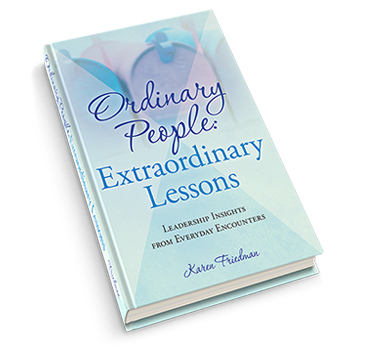We were shopping for a career coach for our son and reached out to someone who came highly recommended as one of the best in the business. “Robert” immediately sent us an email with a multi-page PDF of the services he could offer us.
Included was a category called interview preparation. For $250.00, Robert’s one-hour interview preparation service would provide clients with “live simulated interview practice” to help them clearly articulate their brand and answer difficult questions.
My husband, son and I set up a phone interview using the conference line in my office.
As the call began, we heard a lot of background noise making it difficult to hear. We were asking Robert questions, but his connection kept cutting out and he said he was having trouble hearing us. At first, I thought it was a problem with my conference connection until I heard what sounded like “Iced grande six-pump vanilla latte.”
“Excuse me”, I interrupted, “did you say something”?
“No, thank you, just one shot”, he answered. “Oh sorry, he continued, I’m at Starbucks.”
Let me get this straight. Robert is being interviewed to work with our son. He offers services to help people improve their interview skills and articulate their brand. Yet his brand states ordering coffee is more important than paying attention. How can someone possibly offer interview preparation services if they don’t know how to conduct an effective interview?
My father used to say, “actions speak louder than words.” It means people’s actions, not their words show their real attitudes.
Someone can talk about being the best in the business, but nothing says that better than their behavior. Attitude, attention and approach to people from the moment you meet is what sets you apart. Whether pitching new business, delivering a presentation or attending a networking event, you have one chance to make a first impression.
One of our clients calls this a “customer centric” approach. In their case, they’ve spent millions of dollars, put policies in place and re-structured their entire business model to truly become more customer centric. There are thousands of companies who claim to put consumers first. They have catchy taglines that say so, but that doesn’t mean it’s true.
How often have you sat on hold for long periods of time listening to a recording telling you “your call is very important to us”? Then there’s the customer service line that says, “this call may be recorded for quality purposes”. What does that even mean? How about “calls may be recorded to help our employees handle your inquiries more effectively”?
If you have any interest in truly improving customer interactions, begin by becoming your customer. How would you feel if you sat on hold waiting for your call to be recorded for quality purposes? Or what about apologies that ring hollow?
A recent example of a bad hotel experience comes to mind when I took a team of coaches to a meeting at a high-end resort in Orlando only to experience a tsunami of problems. My air conditioner wasn’t working and when I requested a room change, the front desk manager suggested I didn’t know how to work the air properly. No apology. My colleague had a water leak and had to switch rooms. No apology. That didn’t even compare to another coworker who, to her horror, woke up to cockroaches crawling on her ceiling, bed and floor. Again, no apology. When they moved her to another room, the toilet wasn’t working and overflowed.
Furious, I located the hotel manager who asked me what I wanted him to do. I demanded he take room and food charges off the bill, but he refused. He told me he gave the girl with the cockroach issue a $100.00 room credit. Considering the client was paying for the room, that was hardly satisfactory.
When I got home, I took the issue to the top and got a call from a representative in the CEO’s office. She said she was sorry and offered me 15,000 hotel points, which can’t even buy a room for the night. I told her I wanted the hotel to apologize to my colleague who was traumatized by the roaches. They never did.
Here is what I find astounding. In today’s world of social media, my colleague, who had photos and videos of the bugs could have sent those images around the world. She didn’t and wouldn’t, but how can any brand take that chance?
The Harris Interactive Customer Experience Impact report says a happy customer whose issues are resolved tells 4-6 people about their experience. Approximately 13% of dissatisfied customers will tell more than 20 people and those people will tell more people just as I’m telling you. The report says 86% of customers have quit doing business with a company due to bad customer experience.
Every customer interaction is an opportunity to create positive experiences. When we treat others the way we want to be treated, we send positive silent signals that often speak louder than words.
When we send silent negative signals, they can have long lasting damaging effects, sometimes without our knowledge. For example, after our call with Robert the career coach, as a courtesy, I thanked the person who recommended him. I also shared my experience. After referring him to dozens of people over the years, she is not likely to recommend him again.






